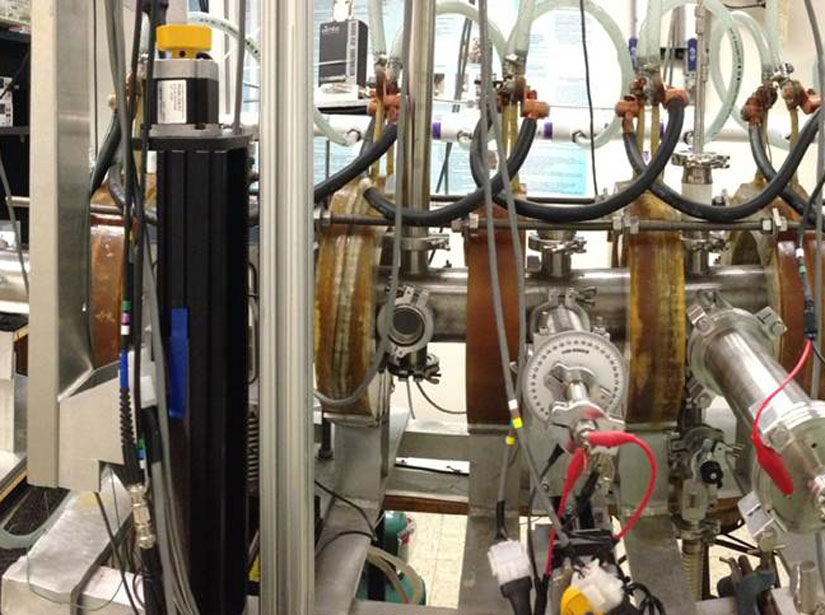Since the 1970s, scientists have observed broadband electrostatic noise (BEN) coming from boundary layer regions in the Earth’s magnetosphere. Until recently, the cause of that noise was not well understood.

Last year, Ami DuBois and a team of researchers were the first to experimentally show that by compressing a magnetized plasma—such as the plasma that makes up the magnetospheric boundary layer—she could create BEN. This year, DuBois et al. took the research one step further and examined more closely how compression produces BEN.
Using the Auburn Linear Experiment for Instability Studies (ALEXIS) device, the researchers produced a magnetized plasma that was subjected to a spatially localized electric field. In space, solar wind compression gives rise to similar electric fields within the magnetospheric boundary layer that intensify during active periods. By varying the magnetic field strength, the researchers simulated different magnitudes of compression and observed a continuous transition between different shear-driven behaviors to identify exactly which factors lead to BEN.
Knowing why BEN occurs can improve the community’s understanding of the magnetospheric boundary layer and other plasma boundary layers in space that affect near-Earth space weather. (Journal of Geophysical Research: Space Physics, doi:10.1002/2014JA020198, 2014)
—Jessica Orwig, Freelance Writer
Citation: Orwig, J. (2015), What causes broadband electrostatic noise in space?, Eos, 96, doi:10.1029/2015EO024811. Published on 25 February 2015.
Text © 2015. The authors. CC BY-NC 3.0
Except where otherwise noted, images are subject to copyright. Any reuse without express permission from the copyright owner is prohibited.

